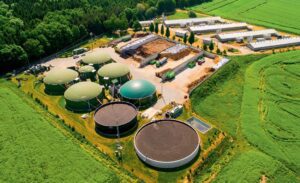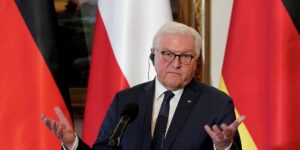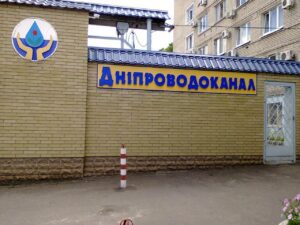
At its meeting on Monday, October 24, the Zhytomyr City Council plans to allocate land plots for the construction of two bio-CHP plants planned by NJSC Naftogaz Ukrainy, Mayor Sergei Sukhomlin said.
“On Monday we are holding an extraordinary session, providing land plots for the construction of large bio-CHPs in Zhytomyr. Many thanks to Naftogaz. It has already ordered equipment, memorandums on construction have been signed with it,” he said during the Energy Club discussion on Thursday.
According to him, these CHP plants, which will also operate on RDF (Refuse Derived Fuel, fuel from waste after sorting – ER), produced at a recently opened waste processing plant, will provide an opportunity to receive 15 MW of electricity for the city and reduce gas consumption in the OZP up to 5 million cubic meters m, while 43-45 million cubic meters are planned for 2022. m, and in 2015 consumption was 97 million cubic meters. m.
At the same time, the mayor noted that several additional quarterly local boiler houses on wood chips have already been put into operation in the city this year, and the thermal power plant that was opened last year on this raw material additionally supplies 1.1 MW of electricity to the network.
“In conditions when Zhytomyr was completely de-energized as a result of Russian missile attacks on October 18, this helps a lot,” Sukhomlin concluded.
At the same time, he said that the city authorities, over the past two days after the enemy strikes, developed a plan to provide critical enterprises with energy resources, in particular, with the help of generators.
“We have allocated funds. Now we urgently buy high-power generators in Turkey,” Sukhomlin said.
He explained that these generators will be used to power the water utility, the main 600 kW sewerage station and 26 pumping stations.
“At least in this case, we will supply water, hourly, but we will,” the mayor assured.
In addition, he said that approximately the same plan with generators is designed for heat communal energy, which includes 10 district and 32 quarterly boiler houses, in particular, the city will have about five or six teams with generators of 250 kW, which will include quarterly boiler houses for four to five hours to warm up the system.
“We are working on this system so that the city does not remain without heat and water, because a potbelly stove in every apartment in a multi-storey building is a terrible picture,” the mayor noted.
According to him, in extreme cases, in each microdistrict of the city, according to the developed plan, there should be large heating points located, for example, in kindergartens or schools where there are autonomous boilers.
“We faced completely new challenges. We simply counted on savings. And when the system cannot work because there is simply no electricity, we were not ready for this,” the mayor stressed.
As reported, in Zhytomyr on October 18, as a result of strikes inflicted by Russian invaders, electricity and water supply stopped working. As the mayor Sergei Sukhomlin reported, the city remained completely de-energized and deprived of water supply for an hour, hospitals worked on backup power.
During the day, according to him, 25-30% of the city is connected to electricity, but the capacity is still not enough for the full operation of the water supply and sewerage.
Sukhomlin said that it is still difficult to assess the extent of the damage and, accordingly, how long it will take to completely eliminate the consequences of the strike, while noting that everything depends on the issue of capacity.
At the end of September, Sukhomlin announced the opening of the first waste processing plant in Ukraine, suspended at the beginning of the war, tentatively in the next few weeks.
He noted that the volume of RDF raw materials, which can be produced from waste produced by the city and used for heat production, can replace 20 million cubic meters. m of natural gas per year.
According to information on the website of the Zhytomyr City Council, the capacity of the waste processing plant, the construction of which began in May last year, is 0.5 million cubic meters. m per year.
In early October, Naftogaz announced that it had begun preparatory work for the construction of thermal power plants that will run on biomass (wood chips) and RDF in Lvov and Zhytomyr. The planned period for putting objects into operation in Lviv is the first quarter of 2023, in Zhytomyr – the fourth quarter of 2023.
In total, Naftogaz intends to build at least nine thermal power plants and bio-boiler houses in eight regions of Ukraine with a total capacity of 250 MW of thermal energy and 52 MW of electricity.

German leader Frank-Walter Steinmeier intends to visit Ukraine, his visit is being prepared, President of Ukraine Volodymyr Zelensky said.
“Had a substantive and productive conversation with German President Frank-Walter Steinmeier. Thanked Germany for the first IRIS air defense system. We must deploy an air shield over Ukraine immediately!” Zelensky wrote on Twitter.
According to him, Germany will also help Ukraine overcome the consequences of Russian missile terror.
“We are preparing the visit of the President of Germany to Ukraine,” Zelensky added.
Internal and external debt of Ukraine in 2009-2022

http://www.minfin.gov.ua , graphics of the Club of Experts

On October 20, the Dniprovokanal utility company of the Dniprovsky City Council and Arsenal Insurance Insurance Company (Kyiv) signed an agreement on compulsory insurance of civil liability of business entities for damage that may be caused by fires and accidents at 11 high-security facilities.
As reported in the ProZorr e-procurement system, the expected price was UAH 117,986, the company’s price offer is the same.
IC Arsenal Insurance is the assignee of IC Arsenal-Dnepr, which has been operating in Ukraine since 2005. Represented in all regional centers and some major cities of the country.

Decrees “On the decision of the National Security and Defense Council of Ukraine dated October 19, 2022 “On the application and amendment of personal special economic and other restrictive measures (sanctions)” have been published on the website of the President of Ukraine.
These decisions impose sanctions on 2,507 individuals and 1,374 legal entities, most of which are Russian citizens and Russian legal entities.
Decree No. 726\2022 imposes sanctions against politicians, public figures, military personnel, among whom is Putin’s daughter Yekaterina Tikhonova. The same decree introduces sanctions against Russian legal entities.
Decree No. 727\2022 imposes sanctions against oligarchs, including against Roman Abramovich.